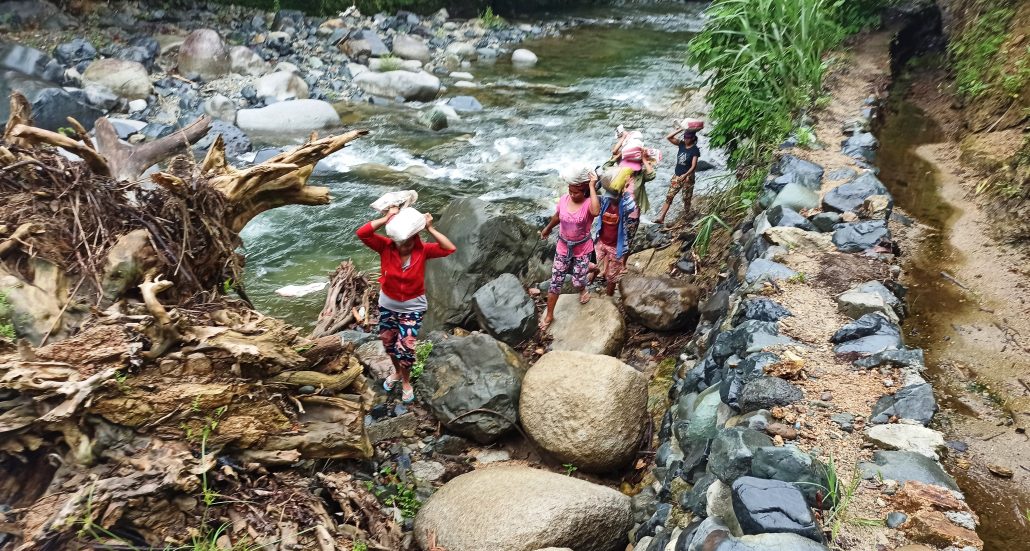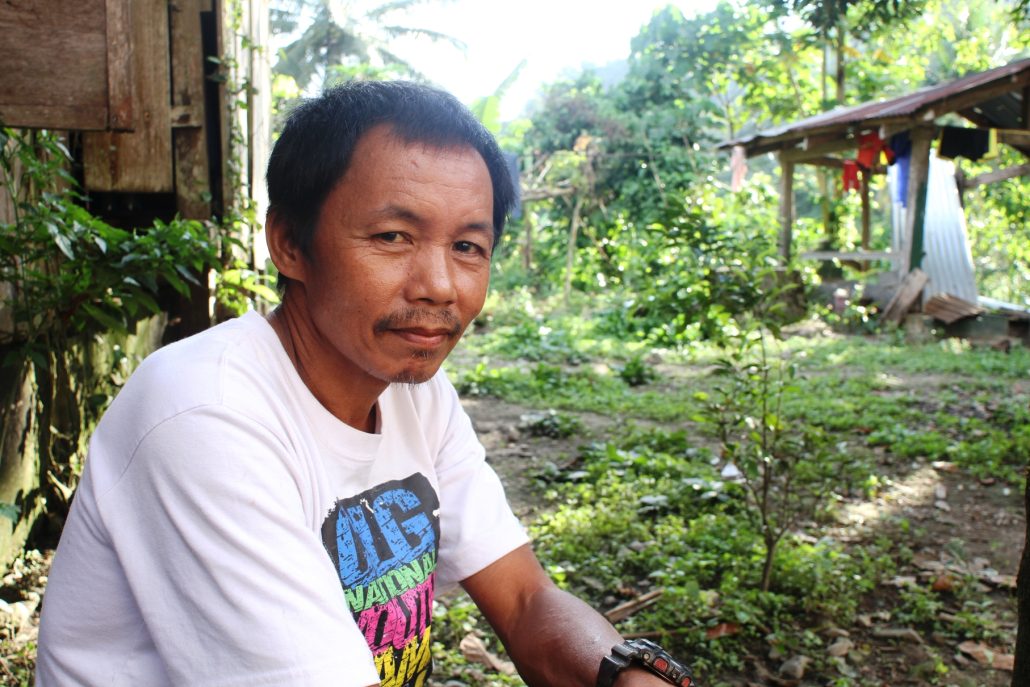From bodong to electricity
A remote Isneg community enjoys 2 decades of renewable energy
[FIRST OF TWO PARTS]
A special report by Raymund B. Villanueva
BARANGAY Katablangan had just been vacated by government soldiers after months of occupation sometime in 1988. For months before they abandoned their community, the Isneg (alternately called Isnag) residents had been witness to intense and numerous firefights between government soldiers and New People’s Army guerillas after peace negotiations between the Corazon Aquino government and the National Democratic Front of the Philippines collapsed. When the fighting became too intense, too frequent and dangerously close to the community, and the soldiers decided to use them as shields by encamping right in their midst, they were forced to evacuate their village.

The residents returned after six months and found only desolation and ruin. The crops they left behind when they hurriedly evacuated have all withered away while their animals have either been butchered by the soldiers or have gone feral. All their houses needed repairs. The barrio, once idyllic albeit poor, was at lowest point in the residents’ collective memory.
It took nearly seven years for Katablangan to fully recover. It took the community that long for them to repair their houses, take up farming again and try to live the normal lives they once had. Livelihood however remained difficult, forcing then 33-year old Dalmacio “Dalma” Lugayan to seek employment as Department of Environment and Natural Resources reforestation employee in Mindoro and Palawan. But as among leaders of the community, he eventually had to return and lead its recovery. He was elected chairperson of the Katablangan Upper Farmers’ Organization the community organized upon its formation.
When normalcy returned, Katablangan’s pangat (tribal leaders) thought it was time to renew their bodong (peace pact) with fellow Isnegs in nearby communities. In 1995, Dalma was among those who trekked across a mountain range to Barangay Dulao in neighboring Malibcong, Abra. Peace among the Isnegs must be preserved and strengthened to allow them to continue their recovery, they thought. With him was his elder brother Benito (Beni), currently Katablangan’s barangay chairperson.

At Dulao, they were amazed at the electric light bulbs at each of houses in the village. Their hosts then showed them one of the earliest micro-hydropower projects for electricity generation in northern Cordillera. When they returned to Katablangan, they were carrying home with them a new pagta (budong agreement) and a Barangay Dulao resolution addressed to the Roman Catholic Diocese of Tabuk endorsing the construction of a similar project in Katablangan.
“We were so envious of Dulao’s micro-hydro power plant that we were only thinking of how to build one of our own,” Dalma said.
Remote, beautiful
The barangay’s main sitio called Upper Katablangan is about 20 kilometers from Conner town proper in Apayao through a steep, narrow and dangerous dirt road that runs parallel and repeatedly crosses Matalag River. The river is a major tributary of the Chico River that is a tributary of the mighty Cagayan River itself, the country’s longest and biggest. Fed by forest streams on parts of the Cordillera yet undamaged by logging and mining companies, Matalag’s cold waters run swift and strong, burbling its winding way down to the Chico. Swidden farms have been hacked out of the forests where the topography allows, but Matalag’s banks are mostly steep on which precariously perch the narrow and muddy road that leads to Katablangan, often broken by brooks created by dozens of waterfalls along the way.

Katablangan lies at the end of that road, on a narrow bowl-shaped valley carved from the mountains by the river. Because of its elevation, fog greets Katablangan most mornings while low-lying clouds usher evenings earlier. Summer heat is tempered by the shade the mountains blanket the community with. At the edge of a village runs Matalag’s headwaters that feed the people with freshwater delights such as wild river crabs and the northern favorite igat (river eel). Pako (fern) and other edible plants still grow abundant that residents pick on their way home from a refreshing dip to go along with meat from wild boars and deer that remain abundant in the surrounding forests.
The Isnegs of Katablangan are farmers who plant rice and corn, crops they bring downstream to sell to traders after each harvest. They are also skilled wood and rattan-workers, spurred by lumber judiciously harvested from the surrounding mountains. Their basi (sugarcane wine) have also become famous outside of Conner.
Still, the Katablanganons wanted electricity, just like their fellow Isnegs in Dulao.
Six years of building
In 1996, Katablangan finally sent delegations to talk to the Catholic parish priests of Conner as well as Kabugao and Tabuk in now separate Kalinga province to learn more about renewable energy projects such as in Dulao. They learned other communities in Kalinga and Abra have started their own micro-hydro projects and became more determined to have their own. They were told to contact the group Sibol ng Agham at Teknolohiya (SIBAT) that provided technical assistance for the construction of the Dulao micro-hydro project.

That same year, SIBAT engineer Cris Alfonso and Catholic missionary Bro. Aloi Goldberger visited Katablangan twice to conduct feasibility studies. After their second visit, the two experts instructed the community on how to begin preliminary works after concluding that Katablangan is ideally suited for a micro-hydro electricity project.
“We were so excited that hardly did the two rounded the bend out of our village that we started building our mini-dam and digging the canal to where we would eventually construct our power station,” Dalma said.
Dalma and Beni then travelled to Baguio City the next year to attend a SIBAT seminar on renewable energy and micro-hydro electricity projects. On their way home to Conner, they already had HDPE (High Density Polyethylene) pipes that men folk had to carry on their shoulders up to Katablangan for two days.
It took the community four years to construct the dam and the canal towards the power station. Aside from their labor, the community cut trees for lumber as their contribution to the project. They built a cement platform for the machinery and a small building for the power station. The community’s remoteness prevented them from bringing motorized machines to help them; everything had to be done by hand. An elder who insisted on doing his share even suffered a heart attack while digging and died. A doubting barangay councilor even vowed to have one of his ears cut off if the project would materialize.

By 1999, the dam, canal and power house were finally finished and passed inspection. Tall wooden posts on which wires would bring electricity to the houses were put up. SIBAT, led by engineer Pol Tabiolo, then arrived with a turbine, dynamo and wires. They installed the machinery that was designed for 7.5 kilowatts, enough to provide the basic and initial electricity needs of Katablangan.
It took almost a year from there to connect the wires from the power station to the individual houses and attach electricity meters in each of the 42 households in Upper Katablangan at the time. The entire community also underwent a series of workshops and meetings to appoint and train those responsible in clearing the dam of flotsam and jetsam that may clog up the pipes and destroy the generator. A power station manager was appointed, responsible for overseeing the equipment. They also appointed a bill collector for the P50 a month per household with electricity connection.
A week before the project went online, the doubting councilor saw that Katablangan’s micro-hydro electric project would really materialize. He butchered pigs to feed the workforce, asking only that his promise to have his ear cut off was never mentioned again. Dalma said it got mentioned during drinking sessions nonetheless.

The entire community was excited the day the generator went online and electricity was supplied to the houses for the first time. “The children ran from the power house to their homes, wanting to be the ones to switch on the lights,” Dalma said. “That night, they played in the barangay clearing way past their usual bedtime while their elders played the gongs that echoed around the mountains throughout the night,” Beni recalled. #
[NEXT] PART 2: ELECTRICITY THAT DOES NOT DESTROY THE ENVIRONMENT
(This story was produced with support from Internews’ Earth Journalism Network.)







